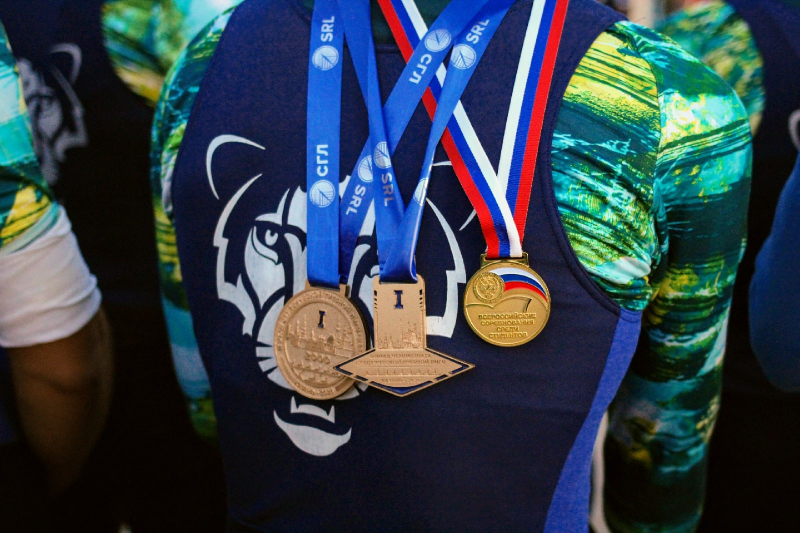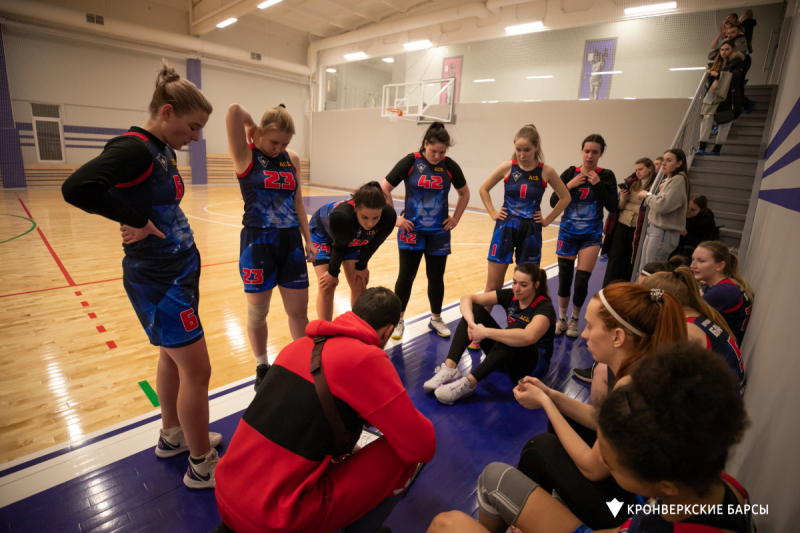Natalya Lashmanova, team captain, rowing club
Rule #1: find a physical activity that brings you joy! I don’t believe there’s anyone who hates all sports. Even if you’d rather stay inside, there are plenty of video guides of all kinds online. Start, for instance, with crossfit or yoga. You can also find a lot of great material on the VK pages of KronBars’s yoga and rowing clubs. Last spring, I even hosted training sessions and participated in crossfit competitions online. You don’t need any special equipment. Give it a try!
Rule #2: systematize. If you’re new to this, three workouts per week will be enough – but not less! If you only do it once or twice a week (or a month), all your efforts will be for naught. Your body needs to adapt to the increased workload, or you’ll only make it worse. Once you feel that it’s gotten used to the new regiment and can recover quicker, feel free to increase the number of sessions.
But even professional athletes have at least one day off every week, so don’t overdo it!
Natalya Lashmanova with the Student Rowing League 2019-2020 Winter Championship award. Photo courtesy of the subject
With summer around the corner, many become hostage to their fitness goals and pour all they’ve got into it. First off, this’ll only make you burn out. Secondly, it won’t get you where you want to be. Many people think they just need to run 5-10 kilometers every day until their heart is racing and they’re out of breath. If that’s your case, prepare to be disappointed. To lose any weight by running, you’ll need to maintain a pace that allows you to speak calmly. That translates to a pulse of under 165. This’ll let you enter the right pulse zone, maintain technique, train your heart, and reduce the risk of trauma. This applies to all sorts of cardio training, be it cycling, rowing, skiing, or running. Ideally, you should use a heartbeat tracker, but you can also learn to rely on your senses. If you’re thinking about taking up running, I advise splurging on a pair of well-made running shoes – this’ll really help prevent injury.
A member of ITMO’s rowing club poses with first-place medals at the 2020 Student Rowing League Championship. Credit: ITMO University
Rule #3: watch your technique! Before even learning things like how to properly do pull-ups, push-ups, and sit-ups, find a good coach or, optionally, really dive into tutorials and find a good training program. Set yourself a goal like “become able to do five pull-ups” and don’t despair if right now it’s a struggle just to bend your elbows a bit and hang from the bar. Besides, maybe they’re just not your thing. There are plenty of exercises designed to strengthen the right muscles that’ll help you avoid hurting yourself (health above all!). Most importantly, remember rule number two! Good luck!
Vasily Fofanov, manager, athletics club
Vasily Fofanov. Photo courtesy of the subject
Vasily gave us his top tips on how to make running beneficial, safe, and fun.
- Choose your route
If you’re a novice, your first runs should be short. One or three kilometers will be good for starters. Choose a good route in advance: you must know where you’re headed and where to turn instead of becoming distracted by plotting your route on the go or getting lost. Try to avoid pedestrian crossings and opt for soft park paths or lengthy, well-paved streets.
- Choose your outfit
Running in early spring, you face the risk of dressing too lightly. I suggest wearing a layer of thermal underwear, a breathable hooded sweatshirt for warmth, and a light windbreaker for wind protection. Don’t forget to keep your legs warm and wear a hat and gloves.
Participants of the KronBars athletics club’s autumn run. Credit: ITMO University
- Choose your tunes
If you run on your own, some uptempo music will boost your endurance, set the tone for the run, and help you keep it up. It’s best to put together a playlist in advance. Some runners prefer to listen to audiobooks or podcasts. It’s a good way to forget you’re running at all, make it a part of your routine, and build a habit.
As summer approaches, we’re launching the #77_every_day_run challenge to count down the days until June. The participants will need to run at least a kilometer every day. You can’t even imagine how your body, your willpower, and your life can change in only 77 days!
And, most importantly, remember: what matters isn’t being “good at running,” but making sure that running makes you feel good!
Get in touch with ITMO’s athletics club to learn more and to join your dormitory’s running group!
Ulyana Chernigovskaya, manager, powerlifting club
- Food
Food is 70% of your success. If you’d just like to lose some weight, all you need is to find out your CPFC (calories, proteins, fats, carbohydrates) needs, calculate what is referred to as a healthy calorie deficit, and make a habit of regularly weighing your meals and tracking them via an app (such as FatSecret).
- Choose a sport you like
First you’ll need to find something you truly enjoy so that every workout doesn’t feel like a chore. If you can’t stand running, but like throwing a ball through some hoops in the evening – why not?
“But I hate sports in general!” Well, then, what about a walk? You can always take the long road home, get off the bus a stop earlier, or meet with friends and stroll in the park instead of going to a cafe. This way, you’ll be more active and, if you’re still maintaining your calorie deficit, even lose some weight.
- Make it regular
If you’ve decided to get into sports, whether to lose weight or to gain some mass, frequency plays a major role. What’s most important is that you don’t quit in the first week; try to make sure that sports and a balanced diet become a part of your lifestyle.
ITMO University’s women’s basketball team prepares for a game against team Neva. Credit: ITMO University
- Don’t set Olympics-level goals
If you’ve never been active but have now decided to lose 10 kilograms in a month, you just might pull it off. But will you be able to ensure that it doesn’t come back a week later? It’s important that you understand this: a quality result will never come as quickly as you’d like. For some, it’ll be six months, for others – two or three years. Don’t rush things, just make sure to preserve your health and motivation!
- Don’t forget to rest
Rest is a crucial part of any training routine and is necessary to let your body recuperate. If you avoid rest, you’ll just over-train yourself and lose all motivation.
Vladislav Trifonov, coach, martial arts club
Vladislav shared with us his advice on making the first steps towards active living and building a habit.
Truth be told, it couldn’t be simpler. The most important thing you should know is that you must only work out when you feel well. If you’re trying to stay in shape, there’s no reason to hurt yourself.
There is nothing more beneficial than exercising in the morning. And sparing 10 or 15 minutes at the start of the day isn’t that difficult. Like with all things, starting can be hard, but once you make a habit of it, your body will thank you.
Vladislav Trifonov (bottom middle) joins KronBars staff and athletes in receiving the Best Student Sports Club 2019/2020 award. Credit: ITMO University
If waking up early isn’t your forte, try to find some time in the afternoon or no later than 8 PM. The principle is the same, but you can make it more intense. Thankfully, we live in the digital age, which means finding a suitable workout routine online should be easy. Your main goal is to achieve regularity. Three or four workouts a week is the minimum that’ll help you stay in shape (or get into it).
It’s also important to mix up exercises for different muscle groups. Don’t just spend the entire session doing sit-ups – introduce some push-ups or core and back exercises into the mix. Split that into several series with 10 reps of each exercise and you’ve got yourself a workout.
As you can see, it’s all quite simple. Just remember – well-being above all else!
Want to learn more about sports at ITMO University? Read our article about KronBars and how to join it, follow KronBars on VK to stay up to date on news, contests, and events, and check out our interview with its head Evgenii Raskin. Finally, check out our guide on how to stay fit, sane, and entertained at home.





